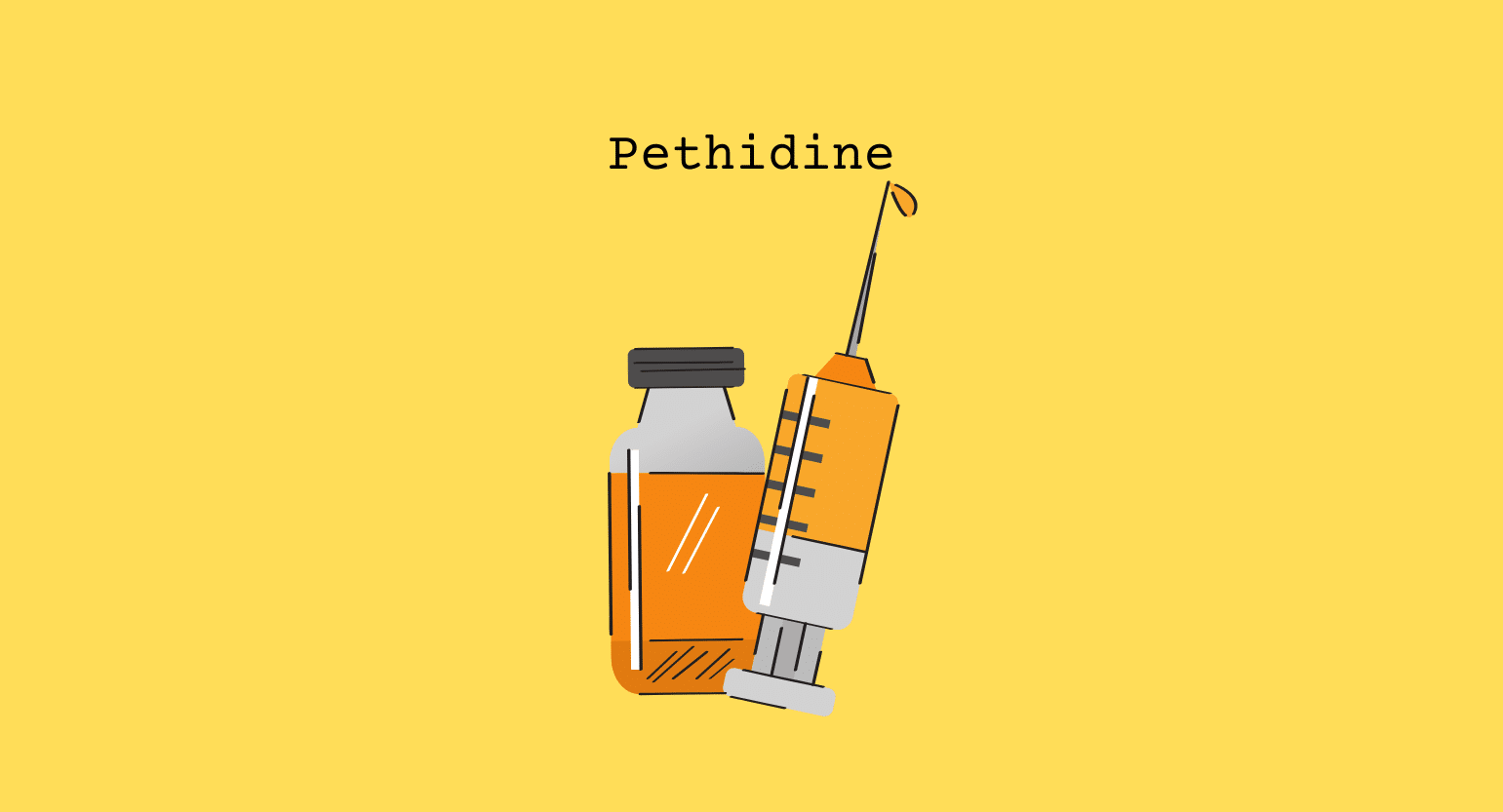Does Kratom Interact With Pethidine (Demerol)?
Yes, kratom interacts with opioids like pethidine in various negative ways.
To begin, kratom and pethidine are central nervous stimulants that work on the body’s opioid receptors. Taking kratom and pethidine together could potentiate the sedative effects of each, increasing the risk of experiencing severe side effects like respiratory depression and overdose.
This pharmacological phenomenon is known as an agonistic interaction.
Furthermore, an estimated 28% of pethidine’s metabolization is done by the CYP3A4 enzyme in the liver [1].
This is significant because kratom also requires the CYP3A4 enzyme for its metabolism [2]. When taken together, kratom and pethidine can compete to bind with such enzymes, causing them to remain in the body too long, leading to a drug buildup.
This type of interaction between drugs is known as metabolic competition.
Pethidine can be deadly in large amounts, so it’s crucial to be extra careful when combining it with anything else. This requires a doctor’s supervision.
Pethidine Specs
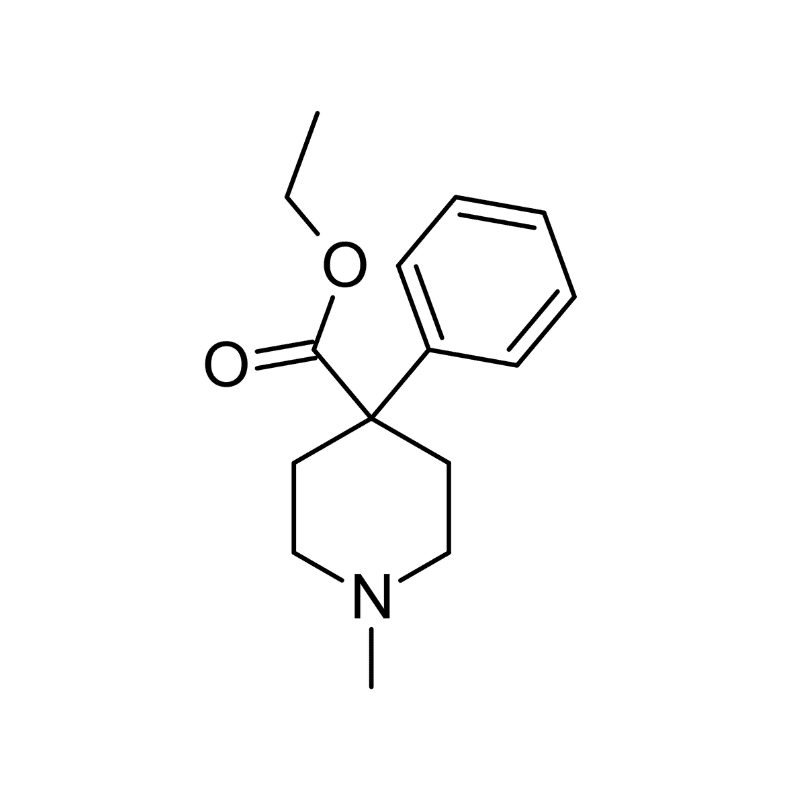
| Drug Name | Pethidine |
| Trade Name | Meperidine, Demerol, Meperitab |
| Classification | Opioid analgesic |
| CYP Metabolism | CYP2B6, with contributions from CYP3A4 and CYP2C19 |
| Interaction With Kratom | Agonistic interaction and metabolic competition |
| Risk of Interaction | High |
Is it Safe to Take Kratom With Pethidine?
No. This combination is dangerous since it puts you at severe risk of respiratory depression, overdose, and death.
Kratom deaths are rare, but when they happen, they are almost always accompanied by the concomitant use of potent opioids such as pethidine [3].
The metabolic competition between the two compounds can lead to a slow but steady buildup of pethidine and cause several dangerous complications.
For example, some of pethidine’s metabolites are toxic; any buildup of those compounds could have serious consequences.
What is Pethidine?
Pethidine — commercialized under the brand name Demerol — is a synthetic opioid analgesic of the phenylpiperidine class [4].
It is the precursor of many different analgesics like pethidine 4-phenylpiperidines, prodines, bemidones, and even more.
Pethidine is a Schedule II drug, indicating its medical use and potential for abuse and dependence. The drug usually draws comparisons with morphine as it shares many of the same characteristics.
Pethidine is delivered via hydrochloride salt in tablets, syrups, or by different types of injection.
It works similarly to all other opioid analgesics, interacting with the opioid receptors in the central nervous system.
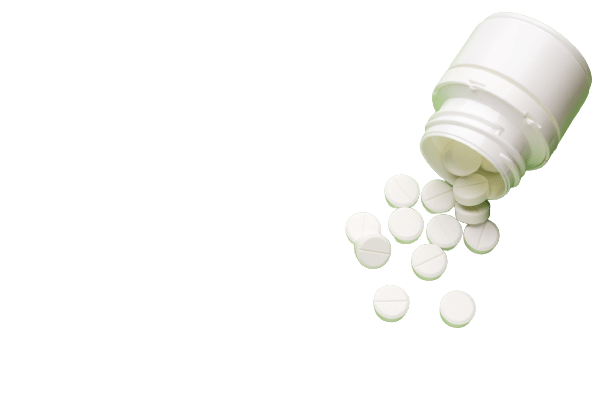
What is Pethidine Used For?
According to the FDA, pethidine has been approved for:
- Managing severe pain
- Preoperative medication
- Support of anesthesia
Pethidine is also the primary opioid medication used to deliver babies [5].
Initially, the compound was thought to have a lower incidence of addiction and be superior in treating pain stemming from biliary spasms or renal colic. This was due to pethidine’s anticholinergic effects [6].
However, these assumptions were later discovered to be false. Pethidine carries the same addiction risk and has roughly the same effects as morphine [7].
In general, there’s a tendency for conflicting results in the scientific literature regarding the similarities and differences between many opioid analgesics.
What’s the Dose of Pethidine (Demerol)?
Prescription opioids like pethidine should not be administered according to dosage information found on the internet. You must remember this is a highly addictive and dangerous substance.
Doctors need to do a risk assessment before prescribing pethidine.
There are several contraindications to assess, like the presence of asthma or gastrointestinal obstruction.
You should only take pethidine by prescription and according to your doctor’s instructions.
Still, the FDA provides the basic dosage guidelines and information related to contraindications, risks, and other specifics.
Generic & Brand Name Versions
You can find pethidine as a prescription-only medication under the following brand names:
- Demerol
- Meperidine
- Meperitab
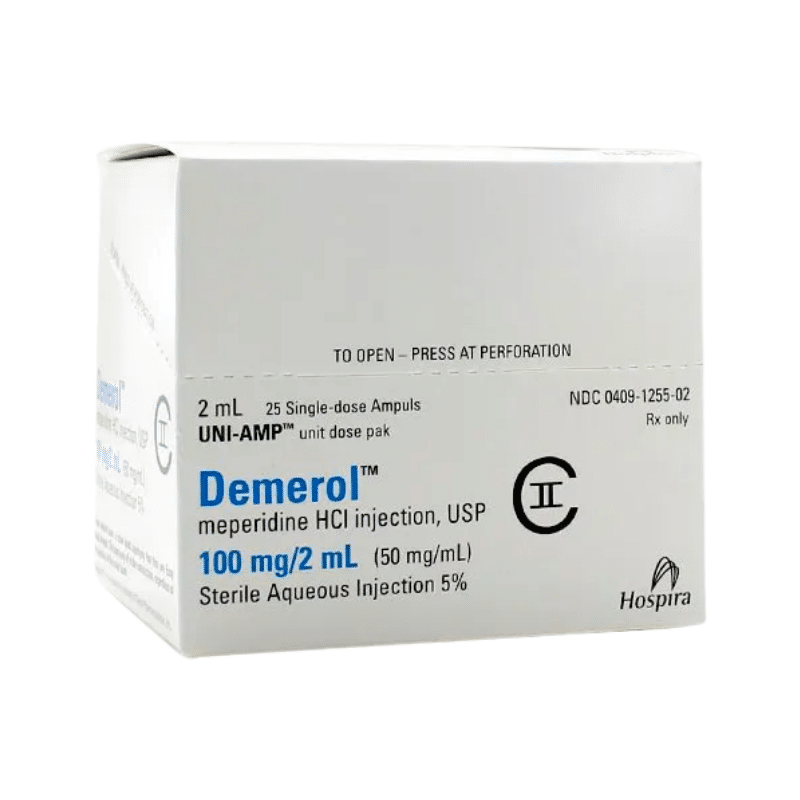
What Are the Side Effects of Pethidine (Demerol)?
Like all opioid medications, pethidine has an extensive list of side effects and contraindications.
Common side effects are:
- Constipation
- Diaphoresis
- Dizziness
- Flushing
- Headaches
- Loss of coordination
- Nausea
- Sweating
- Tachycardia
- Tremors
- Vomiting
- Weakness
More severe side effects include:
- Cardiac arrest
- Circulatory depression
- Hypotensive effect
- Respiratory arrest
- Respiratory depression
- Shock
Additionally, there are other risks:
- Interaction with CNS depressants like alcohol can seriously heighten the risk of respiratory depression.
- Norpethidine, a metabolite of pethidine, is toxic, making it more harmful when compared to other opioids. This also increases the risk of serotonin syndrome and seizures.
- There’s a high risk of physical and mental dependence.
What is Kratom?
Kratom (Mitragyna speciosa) is an evergreen tree from Southeast Asia. Indigenous peoples and local farmers in Vietnam, Thailand, Indonesia, and Malaysia have cultivated and used it for centuries.
Like the coffee plant, kratom is filled with potent alkaloids; these naturally occurring compounds often have psychoactive effects on the body.
These alkaloids can alleviate pain and combat fatigue by interacting with the opiate receptors in the brain and spinal cord.
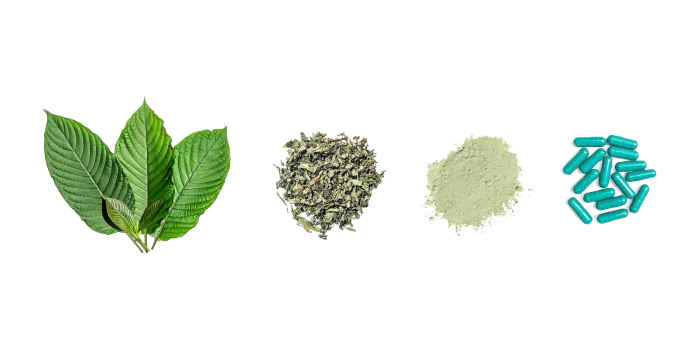
What is Kratom Used for?
Kratom is used for many purposes, and the effects are dose-dependent. Kratom is a stimulant in low doses, providing focus and physical and mental energy. It acts as a sedative and is a strong pain reliever in large amounts.
Kratom is commonly used for the following:
Kratom possesses potent analgesic and anxiolytic benefits — making it popular with those who suffer from chronic pain or anxiety.
Kratom is also promising as a pre-workout alternative, a weight-loss supplement, along with other things.
What’s the Dose of Kratom?
You’ll have to experiment a little with the kratom dosage to find what’s right for you, but it’s always best to start low and work your way up; no sense in taking more than you need. Still, it’s good to have a general idea of the dosage range.
Here are the generalized kratom dosages:
- Low dose (1–5 g): this range best promotes kratom’s stimulant, mind-based effects.
- Medium dose (5–10 g): analgesic and anxiolytic properties become more evident.
- High dose (10–15 g): heavy doses are best for sedative, analgesic, and anxiolytic effects. Do not consume this amount of kratom if you’re unsure how your body will handle it.
As you can see, it’s quite essential to have a solid grasp of the amount of dosing if you want to control what effects you feel.
Remember to be mindful of how your body reacts to kratom; you might be sensitive to it.
Related: How Long Should I Wait Between Kratom Doses?

What Are the Side Effects of Kratom?
As with just any other herbal supplement, kratom has the potential to cause side effects. These, however, might be avoided if you follow the general kratom dosages and take tolerance breaks from time to time.
Kratom can cause the following side effects:
- Anxiety
- Brain fog
- Constipation
- Diarrhea
- Dizziness
- Headaches
- Heart palpitations
- Lethargy
- Nausea and vomiting
Additionally, it bears repeating that kratom can be addictive. However, this risk is minimal if you use kratom responsibly.
Like other substances, never use kratom when pregnant or mixed with drugs or alcohol.
What Are the Different Types of Kratom?
There’s much confusion out there about the different strains of kratom. But don’t worry — we’re here to set it all straight.
The main to know is that all strains have the same suite of benefits, but some are better at producing certain effects.
The different kratom strains are named after the color of the kratom leaf’s vein and, often, the location it’s grown in.

White Vein Kratom
If you want to replace their morning dose of coffee with something a little more energetic — try white vein kratom.
This strain is associated with the stimulant, nootropic benefits you can generally produce with a low dose.
Also see: Find New Sources of Energy With These Coffee Alternatives

Red Vein Kratom
The red-veined kratom strains are sort of the opposite of the white-veined strains. Instead of the stimulant, mind-based effects, you get the analgesic and anxiolytic benefits.
These strains are best avoided unless you’re ready to relax or need substantial pain relief. Many people now prefer to switch to kratom instead of risking the adverse effects of pharmacological antidepressants and painkillers.

Green Vein Kratom
If we think about the kratom spectrum, green vein kratom is right in the middle. This is because it has an outstanding balance of the benefits found in both white and red-veined strains.
The fundamental question is this: do you want a targeted experience or a more generalized one? If your answer is the latter, green vein kratom is your best bet.

Yellow Vein Kratom
Yellow vein kratom is probably the least remarkable out of all the kratom strains — tough, we know.
Yellow vein strains have no distinguishing features except that it is the mildest. Besides that, users often report it’s similar to green vein kratom.
Yellow vein kratom is popular with first-timers and those sensitive to kratom.

Key Takeaways: Is it Safe to Mix Kratom & Pethidine (Demerol)?
This combination is dangerous. You should never mix kratom and pethidine.
These compounds are known to have a dangerous interaction, as kratom consumption can heighten the already considerable risks of pethidine.
The only occasion where it might make sense to use kratom and pethidine is in the context of a drug substitution program, but never do this without a doctor’s supervision. The risks are still too high.
In conclusion, it’s best to avoid this combination under any circumstance.
- Ramírez, J., Innocenti, F., Schuetz, E. G., Flockhart, D. A., Relling, M. V., Santucci, R., & Ratain, M. J. (2004). CYP2B6, CYP3A4, and CYP2C19 are responsible for the in vitro N-demethylation of meperidine in human liver microsomes. Drug metabolism and disposition, 32(9), 930-936.
- Kamble, S. H., Sharma, A., King, T. I., León, F., McCurdy, C. R., & Avery, B. A. (2019). Metabolite profiling and identification of enzymes responsible for the metabolism of mitragynine, the major alkaloid of Mitragyna speciosa (kratom). Xenobiotica, 49(11), 1279-1288.
- Corkery, J. M., Streete, P., Claridge, H., Goodair, C., Papanti, D., Orsolini, L., … & Hendricks, A. (2019). Characteristics of deaths associated with kratom use. Journal of psychopharmacology, 33(9), 1102-1123.
- Yasaei, R., Rosani, A., & Saadabadi, A. (2021). Meperidine. In StatPearls [Internet]. StatPearls Publishing.
- Bricker, L., & Lavender, T. (2002). Parenteral opioids for labor pain relief: a systematic review. American journal of obstetrics and gynecology, 186(5), S94-S109.
- Latta, K. S., Ginsberg, B., & Barkin, R. L. (2002). Meperidine: a critical review. American journal of therapeutics, 9(1), 53-68.
- Unlugenc, H., Vardar, M. A., & Tetiker, S. (2008). A comparative study of the analgesic effect of patient-controlled morphine, pethidine, and tramadol for postoperative pain management after abdominal hysterectomy. Anesthesia & Analgesia, 106(1), 309-312.

